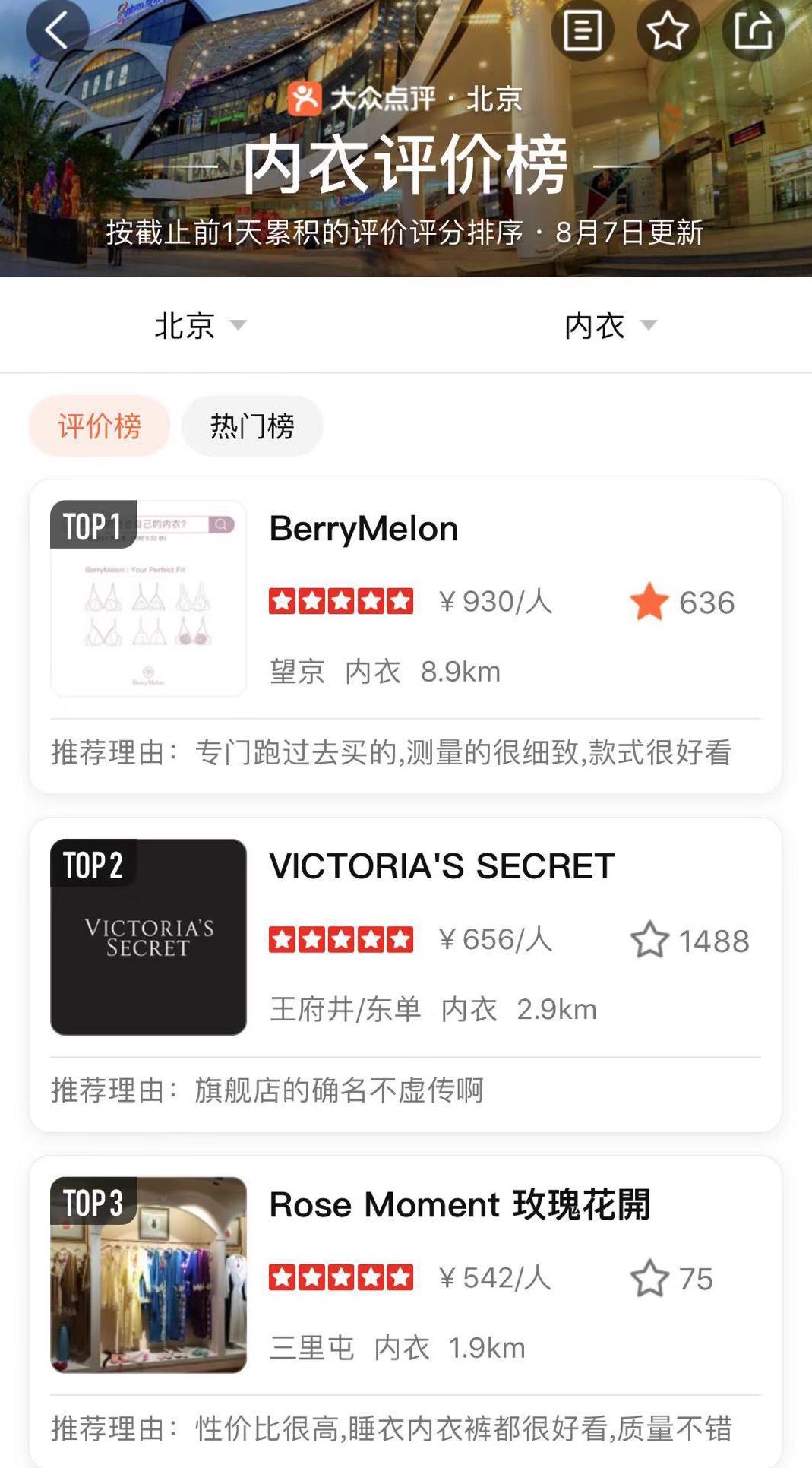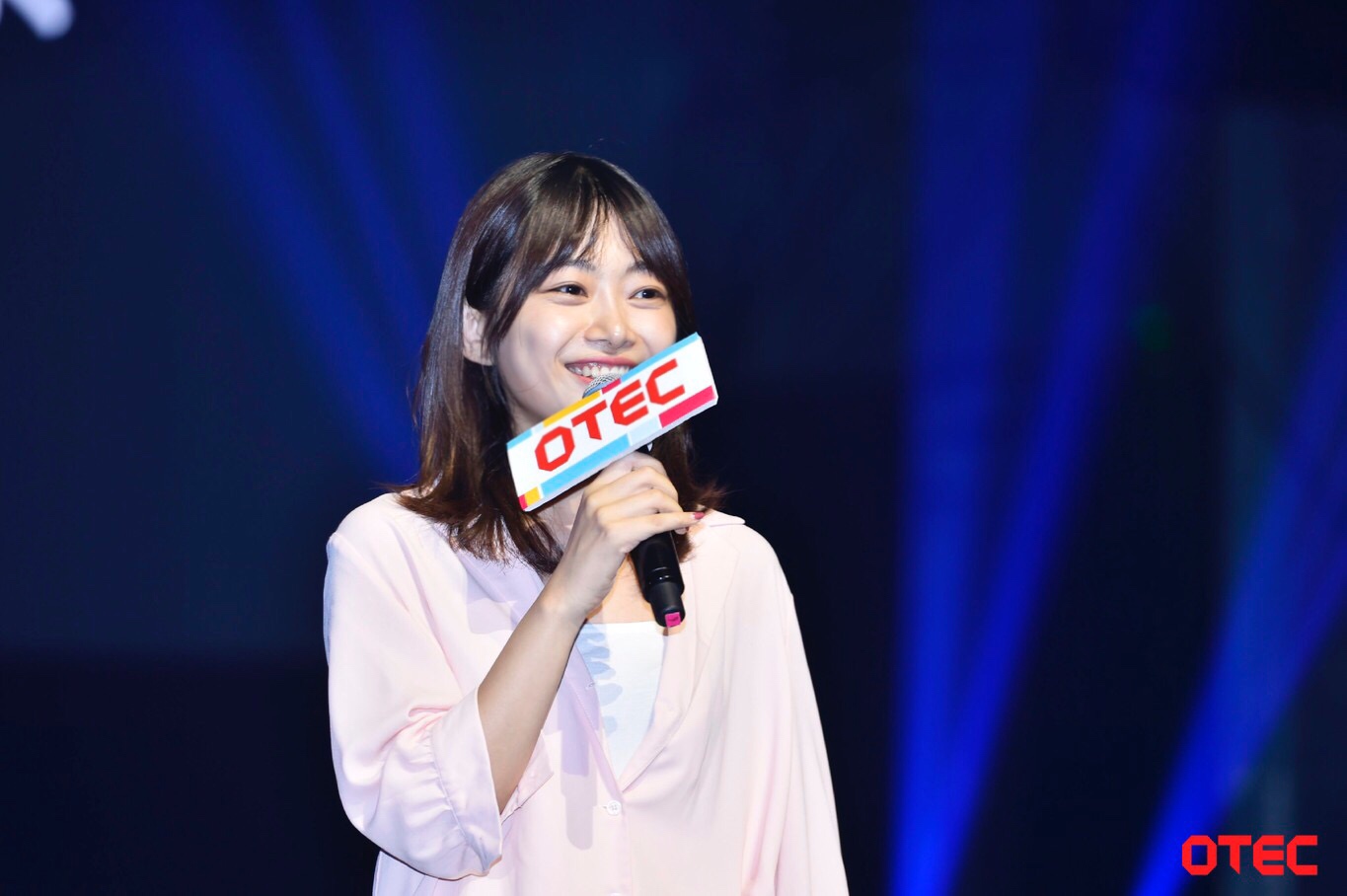The Lingerie Startup Challenging Victoria’s Secret in China
At this year’s Overseas Talent Entrepreneurship Conference (OTEC), among all the entrepreneurs that dove into technologies like AI and machine learning, a Chinese underwear company called BerryMelon caught my eye almost immediately. Founding partner Xinyue Zhao spoke with great frankness and sincerity about the predicament Chinese young women are facing when choosing underwear. It’s one of the industries that female audiences found most relatable. However, the male judges of the competition felt a bit awkward and reluctant to ask detailed questions. “It might be too private for more questions,” the host chuckled in the silence that settled in the room.

It is indeed a private issue. In fact, the two parts of the company’s name Berry and Melon refer to the different sizes of women’s breasts. The slogan Xinyue Zhao constantly brought up in her speech was “whether it’s big or small, the pretty shape is all that matters.”
BerryMelon is a bra maker that aims to solve all the hassles that Asian young females are facing, for instance, discomfort caused by the wire, unfilled bra cups, shoulder straps that keep falling, etc. The company started its business with customized bras, and later began mass production based on accumulated measurements from young female consumers. The data gathered from the personalized service enhances its newly developed online algorithm, which is able to help consumers find the underwear best suited for them in just 60 seconds. They now have a batch of set designs to choose from both online and offline.
In its offline experience store, staff will take 25 different breast-related measurements from the clients. The breasts are measured in different postures – standing, or leaning forward at 45 degrees or 90 degrees. Measurements are also taken during inhalation and exhalation. As a result, the clients are given accurate sizes, an outline of their own breast features, as well as other details concerning breast care.

“Asian girls have very different shapes of breasts compared with western girls, usually the upper half is not as full, and the bottom half is round and full.” Xinyue said in the interview based on her own observation and experience, “During the time when I went to the States for studies, I used to have this blind pursuit of famous international brands. But then I realized they are just not so comfortable to wear.”
Internet brands v.s. big international brands
Over the years, young Chinese female consumers, especially those that have, at one point, been immersed in western culture have developed a strong belief in global brands like Prada and Louis Vuitton. The desire for these brands is so strong that it even penetrates into the purchase of underwear. They buy the well-known brands for the fashion, the classy design. However underwear is something much more private than handbags or a trench coat, and only the wearer knows exactly how it feels.
In America, Victoria’s Secret is the sort of above average but not high-end brand, whose stores can be found even at local train stations. However it is still somehow positioned as a high class brand by Chinese consumers, even though most of its designs are not favorably designed for the breast shape of Asian women. Ever since its founding, the brand was known for creating a sensual, sexy allure for men’s eyes. Its founder Roy Raymond had this instant epiphany when he felt uncomfortable shopping for lingeries for his wife. Despite the brand’s contracting market share, it still dominates as much as 24% of the US market.

American Internet underwear brand Thirdlove once declared war against Victoria’s Secret publicly, deriding the brand’s out-dated male-oriented aesthetics in an open letter, “You market to men and sell a male fantasy to women. But at ThirdLove, we think beyond, as you said, a ‘42-minute entertainment special.’ Your show may be a ‘fantasy’ but we live in reality. Our reality is that women wear bras in real life as they go to work, breastfeed their children, play sports, care for ailing parents, and serve their country.” In fact, this year’s Victoria’s Secret fashion show was canceled due to decline in ratings.
The website of Thirdlove is a beautiful presentation of the diversity of women, having models catering to different body shapes, ages, races and even sexualities. In a word, it advocates that every woman should be able to find their own perfect bra.

As for domestic brands, the picture is quite different. According to Xinyue, for now, the big domestic brands only account for about 3% of the market, which creates huge potential for new startups in this industry. Right now there are altogether 220,000 Taobao vendors selling bras, among which there are only about 30 original brands like BerryMelon.
“We worked with the product team from Stella McCartney for new editions this season, and look forward to cooperating with world-class designers in the future. But I still believe that comfort matters more than the design. The analogy of our company in the US would be Thirdlove,” said Xinyue. In this sense, what makes BerryMelon different is not the design but the perception and the brand’s focus on caring for women’s needs.
An ongoing self exploration
“If you go to a mall here, the clerks selling bras tend to serve their clients based on their own experiences and the stock at hand, which can be a little biased. That’s why a lot of girls have been wearing the wrong size all along,” Xinyue explained, “If you keep wearing the wrong size until you are above 25 years old or something, you get all sorts of problems like excessive sagging. It is common sense.”
For now, BerryMelon’s offline store lists at the top of all underwear stores on Dazhong Dianping, a trusted rating platform in China. In the comments section, many mention their surprise after learning their own correct and comfortable sizes.

One of the comments that gave the platform a five-star ratings reads, “I’m actually one of the typical ‘flat-chested’ girls. My narrow shoulders bother me, as it constantly leads bra straps falling off. I have never carefully studied the choices of bras before. Only after specific measurements do I know triangle-shaped bras suit me best.” In fact, according to data on Taobao, the average bra size for Chinese women is a B-cup (accounting for 41.45%). A-cup accounts for 25.26%, for whom an “ideal” choice used to be to put more padded cloth in front of their chest to present a fuller appearance.
In this respect, it’s not solely attributable to Chinese women’s lack of awareness about bra sizing and comfort. It’s more about the invisible legacies that are passed down from generations. For our mom’s and grandmother’s generations, choosing the perfect bra is definitely not a top priority when they are preoccupied with more important tasks like feeding their family.
Xinyue Zhao ended her speech saying, “I think individual variances seem rather insignificant compared with the collective awareness that this era has granted us. For the last two generations, we tend to feel not confident enough about our own bodies, while consistently aiming for bigger boobs in this process of self-exploration. Modern Chinese women have stronger personalities, with the eagerness to embrace different forms of beauty.”

At this point, diversity and confidence have a better say than sexy and sensual.
Xinyue used to be a journalist, venture capitalist, but now she wants to be the one who stands together with modern Chinese women, “Our primary goal is for our next generations to get rid of the perplexity and low-self esteem about not knowing their bodies.”
-77-1.jpg)

